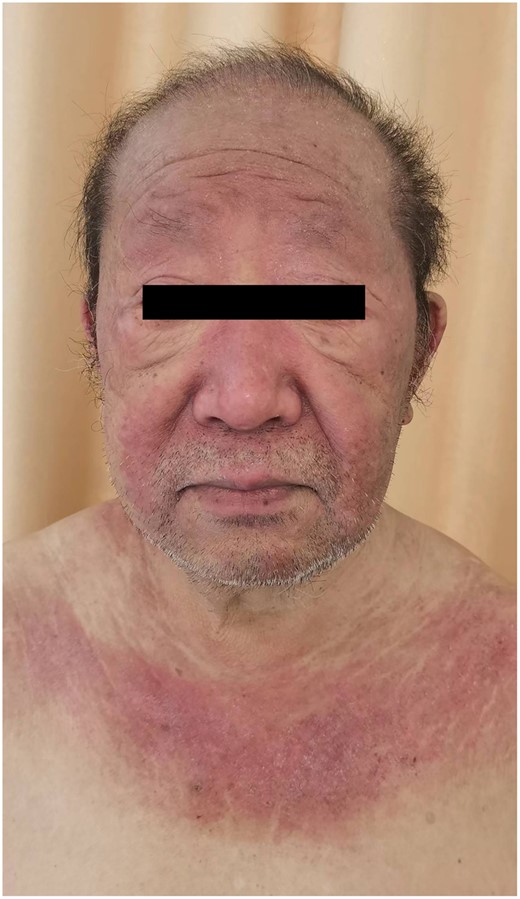-
PDF
- Split View
-
Views
-
Cite
Cite
H Zhang, R Cui, V-neck sign in dermatomyositis, QJM: An International Journal of Medicine, Volume 115, Issue 12, December 2022, Page 855, https://doi.org/10.1093/qjmed/hcac201
Close - Share Icon Share
A 78-year-old man presented with a 6-month history of itching over the body, and a 3-month history of dysphagia and proximal weakness. The pruritus was aggravated after sunlight exposure. He was diagnosed with allergic dermatitis and erythroderma in other hospital, and use of neomycin and levocetirizine was ineffective. Physical examination revealed progressive, pruritic rashes on his scalp, face, chest, posterior region of neck and extremities (Figure 1). Laboratory testing revealed a creatine kinase level of 264 unit per liter (normal value, <190), and a lactate dehydrogenase level of 281 unit per liter (normal value, <240). He was tested strongly positive for anti-transcriptional intermediary factor 1-γ (anti-TIF1γ) antibody IgG. The chest compute tomography revealed multiple soft tissue nodules and enlarged lymph nodes in his mediastinum. He was unable to undergo a biopsy due to poor cardiorespiratory function. The diagnosis of anti-TIF1γ antibody-related dermatomyositis was made. Anti-TIF1γ antibody is robustly linked with cancer-associated dermatomyositis.1 Patients with anti-TIF1γ antibodies frequently present severe skin eruptions and dysphagia, which have been reported as common symptoms of cancer-associated myositis.2 After the treatment with prednisone in combination with monthly pulse cyclophosphamide, the skin lesions and dysphagia were alleviated.

Heliotrope rash over the upper eyelids, extending downwards along the nasolabial sulcus and V-neck sign rash.
Funding: This work was supported by a grant from the Shanghai Municipal Health Commission (No. 20204Y0255).
Patient informed consent: Obtained.
Conflict of interest: None declared.



